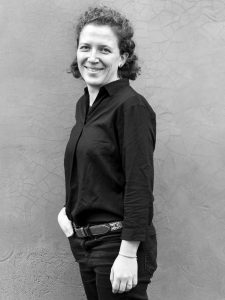Olga Zenker

Shortbio
- Since 2022 Fellow at DFG Research Group 2227 “Identity and Heritage” at Bauhaus-Universität Weimar
- 2021-2022 Research Assistant at the Orient Department of the German Archeological Institute, Damaskus branch
- 2016-2020 Research assistant at the Chair for History of Architecture and Urbanism, TU Berlin
- 2008-2016 Architecture studies (B.Sc. & M.Sc.) at Technische Universität Berlin
- 2007-2008 Social and Cultural Anthropology studies at Freie Universität Berlin
Contact
Bauhaus-Universität Weimar
Faculty of Architecture and Urbanism
DFG Research Group 2227 “Identity and Heritage”
D-99421 Weimar
Seat: Prellerhaus | 3rd floor | Room 303
Geschwister-Scholl-Str. 6 | | D-99423 Weimar
olga.zenker[at]uni-weimar.de
100 years of building and living in Umm Quays The forgotten heritage of a 19th century ‘Jordanian’ village
The planned PhD project is dealing with the so-called ‘Upper Village’ Hara Foqa of Umm Qays, located in the extreme northwest of Jordan near the border to Syria and Israel and just next to the ancient city of Gadara. The village was probably built in the late 19thcentury using the remains of the ancient city as building material. Until 1984 the inhabitants were forced by the Jordanian government to leave their houses. While the initial intention was to demolish the ΄younger΄ buildings in favour of exploring ancient Gadara, there are currently plans to promote Hara Foqa as a ΄Jordanian΄ heritage site for tourism.
In this process of valorisation, the identity of the site is also being renegotiated. In favour of the interests of national and international institutions the position of local actors is increasingly losing influence, while the question of the actual history and origin of the architecture and its former inhabitants remains unanswered.
The aim of the dissertation project is to systematically investigate the building and housing history of the village using building research and ethnological methods. It is intended to collect the remaining knowledge about the building culture practiced in the village in its constructive and social dimensions and thus to contribute to a more comprehensive understanding of the village and its historical development.
A study of the architectural and cultural characteristics of the buildings in connection with the once existing intercultural relations of the village within the region will help to identify the actual significance the village’s cultural heritage has for the groups involved in the negotiation process. For the ongoing political discussion on how to deal with the built heritage of the 20th century, such an investigation could provide important information. It also allows to question the conventional hierarchies of knowledge about architectural heritage in general.
Current Publications
F. Keshk, B. Schäfer, O. Zenker (2021): Privacy in a Rural Settlement. Open Spaces in the Nubian Villages of Bigge Island, in: Salgirli, Saygin (Hg.): Inside/Outside in Islamic Art and Architecture, Bloomsbury.
H. Schlimme, B. Schäfer, O. Zenker, C. Bieber (2020): The Nubian village of Balle: Social and spatial structure explained using a virtual model, in: Scires-IT, Volume 10, Issue 1.
B. Schäfer, O. Zenker (2017): Die nubischen Dörfer auf Bigge. Vorbericht über die bauhistorischen und ethnologischen Forschungen, in: Mitteilungen des Deutschen Archäologischen Instituts Kairo, Band 73.